Last Updated on October 18, 2024
Table of Contents
Remove Indoor Toxins From Your Home and Office
Did you know that indoor air pollution is one of the top environmental risks to your health? After having some issues with what I thought must be allergies that just never went away, I introduced some NASA approved air purifying plants to my home. After not too long, my “allergy” issues started to disappear. A few carefully chosen plants (one for every 100 square feet is ideal), even for me, a total novice houseplant gardner, made quite a difference in my life. Who knew that NASA, an organization that achieved one of human-kinds greatest feats, would have such a great, but simple solution to indoor earth-bound, air pollution?
How is Indoor Air Quality Affected?
In this modern world, we live in enclosed spaces, oftentimes sealed up by high-quality windows, weather stripping, and high-efficiency furnaces and air conditioners. Combine this well-sealed environment with dust, furnishings, cleaning products, artificial air fresheners, and synthetic building materials, our homes can emit a wide variety of toxins and chemicals into our indoor air. Things like ammonia, benzene, and formaldehyde can really do a number on our bodies, even in small amounts. These chemicals can lead to something called “sick building syndrome,” which can be the cause of headaches, eye, ear and nose irritation, dizziness, and nausea.
&
NASA Study: What’s in our air?
NASA ran a clean air study to research the ways they could clean the air on space stations. They were looking for ways to use photosynthesis, the process that plants go through to “ingest” carbon-dioxide, and “breathe out” oxygen, to keep the air fresh and comfortable in a tightly sealed environment. What they learned not only helps astronauts stay healthy in space, but it revealed that plants don’t only clean carbon-dioxide out of the air in space, they also remove other things from our environments and purify the air.
After further study, NASA revealed that they had discovered plants also cleanse the air here on Earth in our indoor environments. Houseplants can remove other toxic chemicals from the air. NASA found that there are five main chemicals these plants are able to cleanse the air of; ammonia, xylene, trichloroethylene, formaldehyde, and benzene. Each of these chemicals is brought, by us, into our homes in many surprising ways.
- Ammonia, likely the most familiar of these chemicals to most of us, is in window cleaner, multipurpose cleaners, toilet bowl cleaners, oven and drain cleaners, and the like.
- Xylene is mainly found in paint and furniture stains and waxes.
- Trichloroethylene is found in household cleaners, glues, carpet spot removers, and paint.
- Formaldehyde makes its way into our indoor spaces via furniture, bed sheets, mattresses, air fresheners, and even clothing.
- Benzene comes indoors in inks, rubber, paint, and glue.
How Do Plants Remove Toxins from the Air?
It turns out, those lowly houseplants are absorbing and processing some other harmful and unpleasant chemicals when they absorb and process carbon-dioxide. NASA discovered the plants are helping us out even more than we thought by taking in many of the compounds and chemicals we’ve added to our indoor air. Not only that, but NASA learned that even some of the microbes in the potting soil are working double-duty. The soil is keeping the plant happy and fed and alive, while at the same time removing benzene from the air around it.
Toxicity to Pets
Before running to your nearest gardening center or farmer’s market of choice, keep in mind that we are talking about indoor plants. And indoor plants can be harmful to your cats and dogs in ways they aren’t harmful to you and me. The ASPCA has an in-depth listing of plants that are toxic to dogs and cats. Always check there before deciding what plants to add to your home (indoors or out).
Top 10 NASA approved air purifying plants
#1 Garden Mum
Easy to find pretty much anywhere, the Garden Mum scrubbed pollutants out of the air in the NASA study better than any other indoor plants they looked at. These colorful flowers can be kept indoors before being planted outside when they are done blooming.
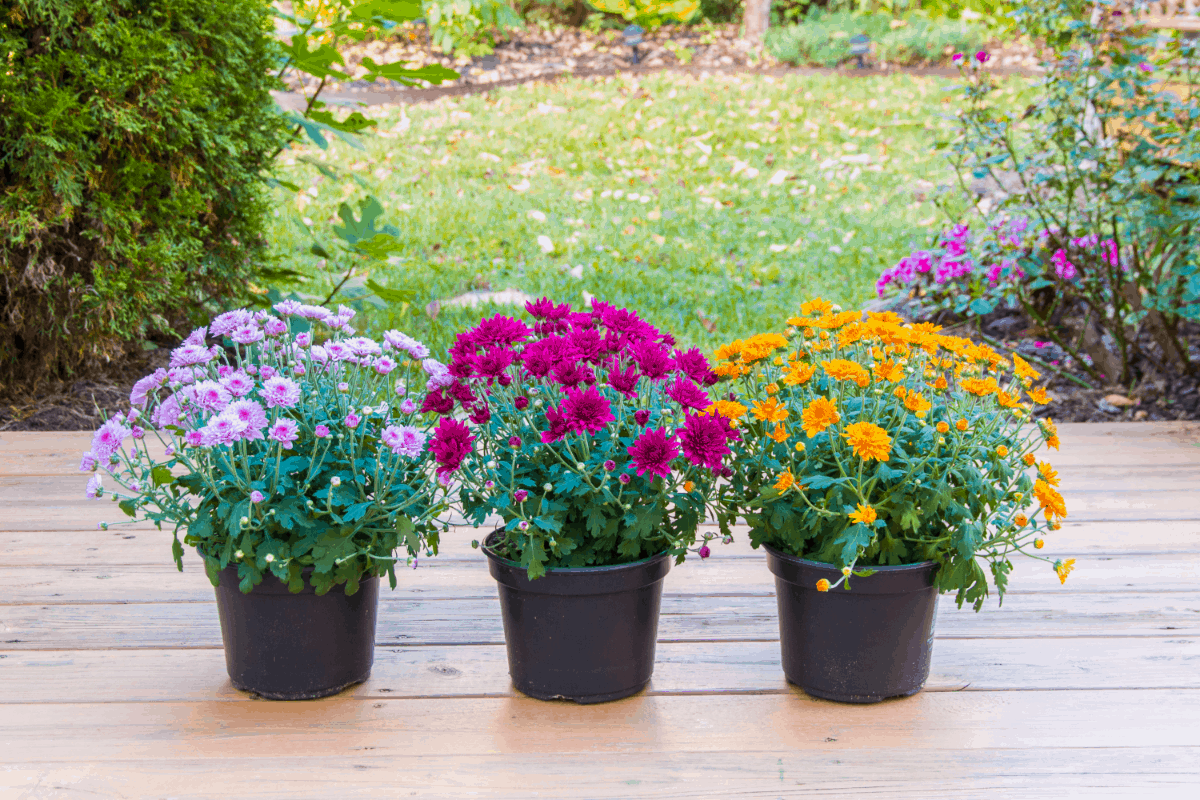
The Garden Mum removes ammonia, benzene, formaldehyde, and xylene from the air.
#2 Peace Lily
Smaller than most of the plants on this list, the Peace Lily does a lot of work cleaning the air for its size. While, like all flowering plants, they will contribute some pollen and scent to your indoor space, they are easy to care for and are a very attractive addition to indoor decor. The Peace Lily likes shady areas and moist soil.
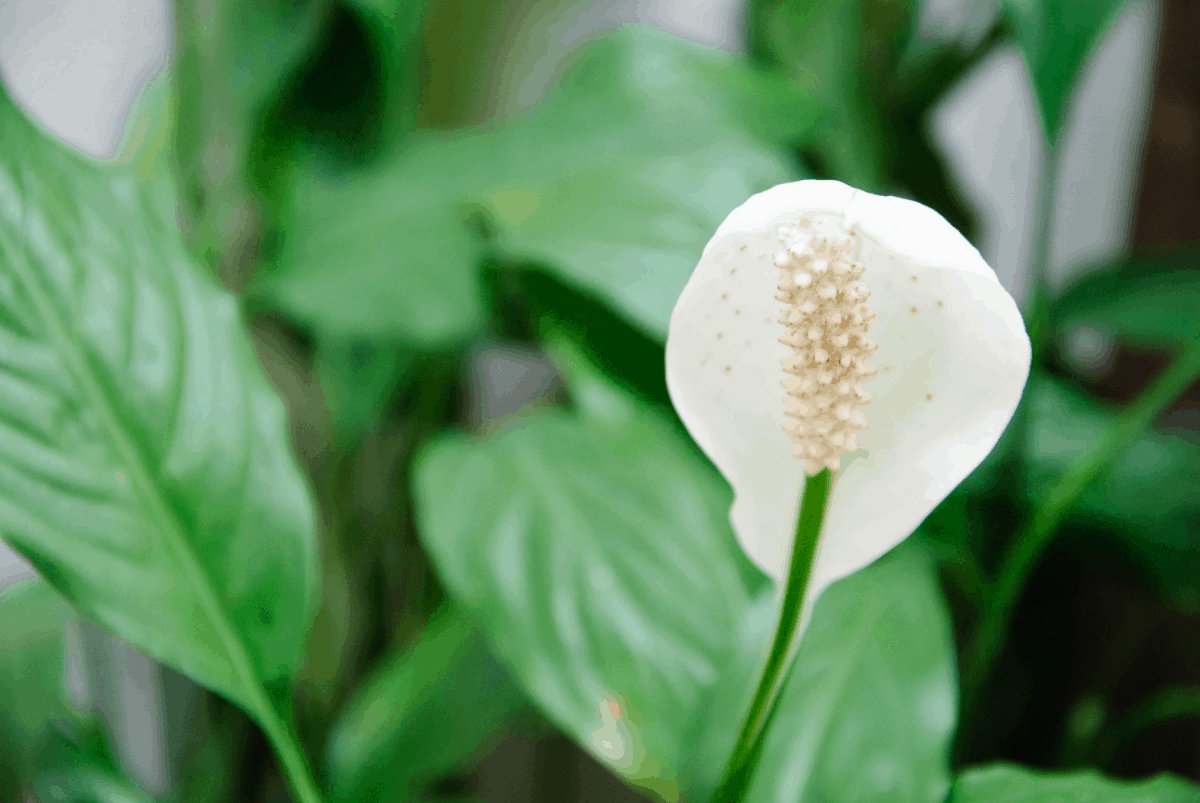
Keeping a Peace Lily indoors will help remove ammonia, benzene, formaldehyde, and trichloroethylene from the air.
#3 Dracaena
There are many kinds of Dracaena. This makes the relatively easy to find one that works with your decor and style. They are foliage plants (meaning they don’t flower) with stripes of color in the leaves. This is one of the houseplants that are toxic to cats and dogs, so stay away if you’ve got one of these furry friends in your home.

Dracaena plants were found to remove benzene, formaldehyde, trichloroethylene, and xylene from the air.
#4 Snake Plant or Mother-in-Law’s Tongue
Snake Plant is really difficult to kill. It needs a good watering every so often, but it is perfectly fine with the soil drying out occasionally. Great for us beginners or busy people!
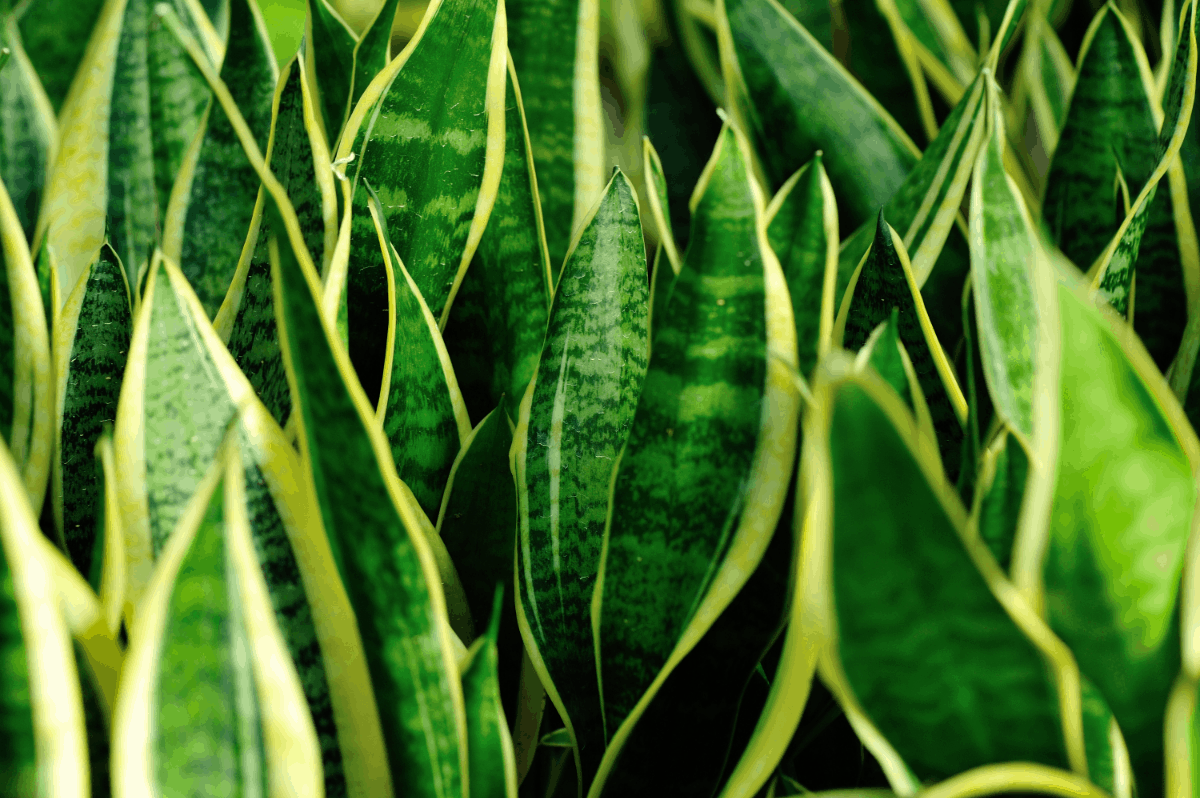
Snake Plant/Mother-in-Law’s Tongue purifies the air of benzene, formaldehyde, trichloroethylene, and xylene.
#5 Spider Plant
Spider Plant is one of the easiest indoor plants to grow. Even if you haven’t got a green thumb they are likely to do just fine without your help. This houseplant likes indirect sunlight and will spread by making little baby Spider Plants.
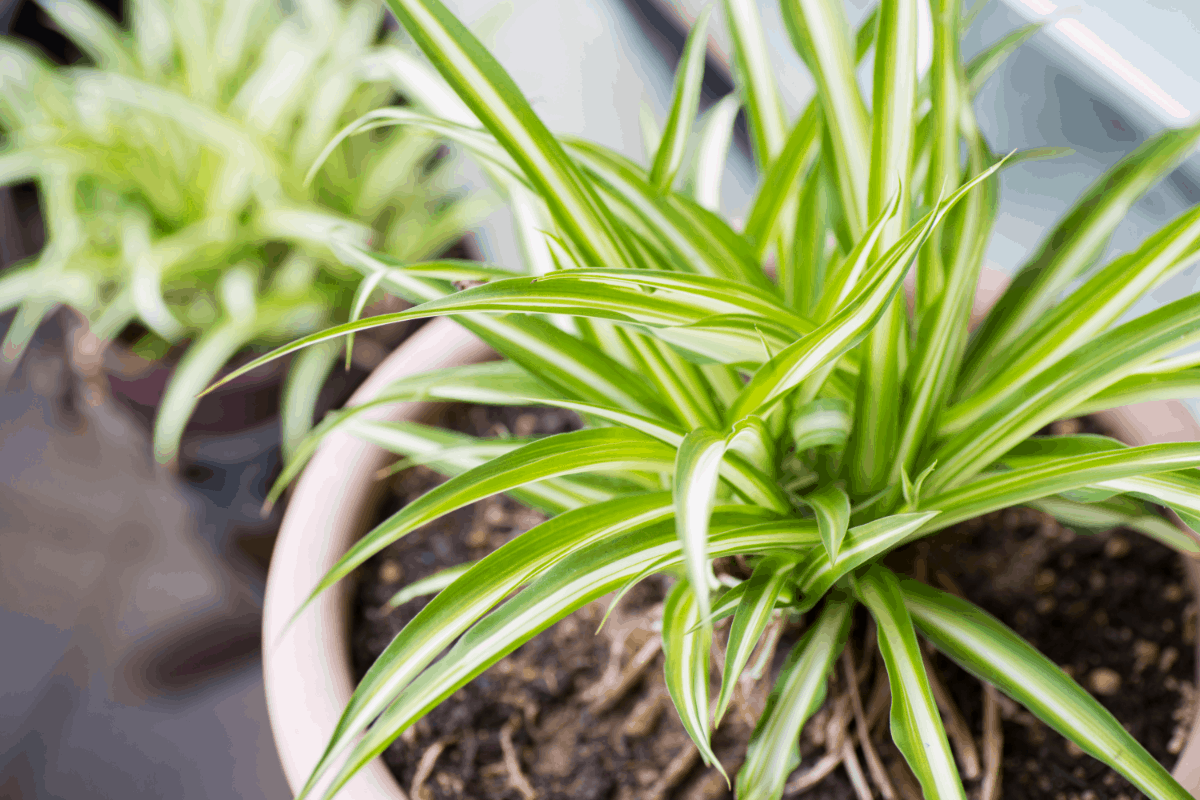
Spider Plant does a good job of cleansing the air of formaldehyde and xylene.
#6 Ficus or Weeping Fig
Ficus is a tree. When grown indoors it can be anywhere from two to ten feet tall. It is a very low maintenance houseplant that, as a bonus, can be taken outside to add some excitement to your yard or porch during the warm months, and brought indoors when temperatures dip near freezing. This one is a great wintertime air cleaner. It likes indirect light and you can let the soil dry out between waterings.
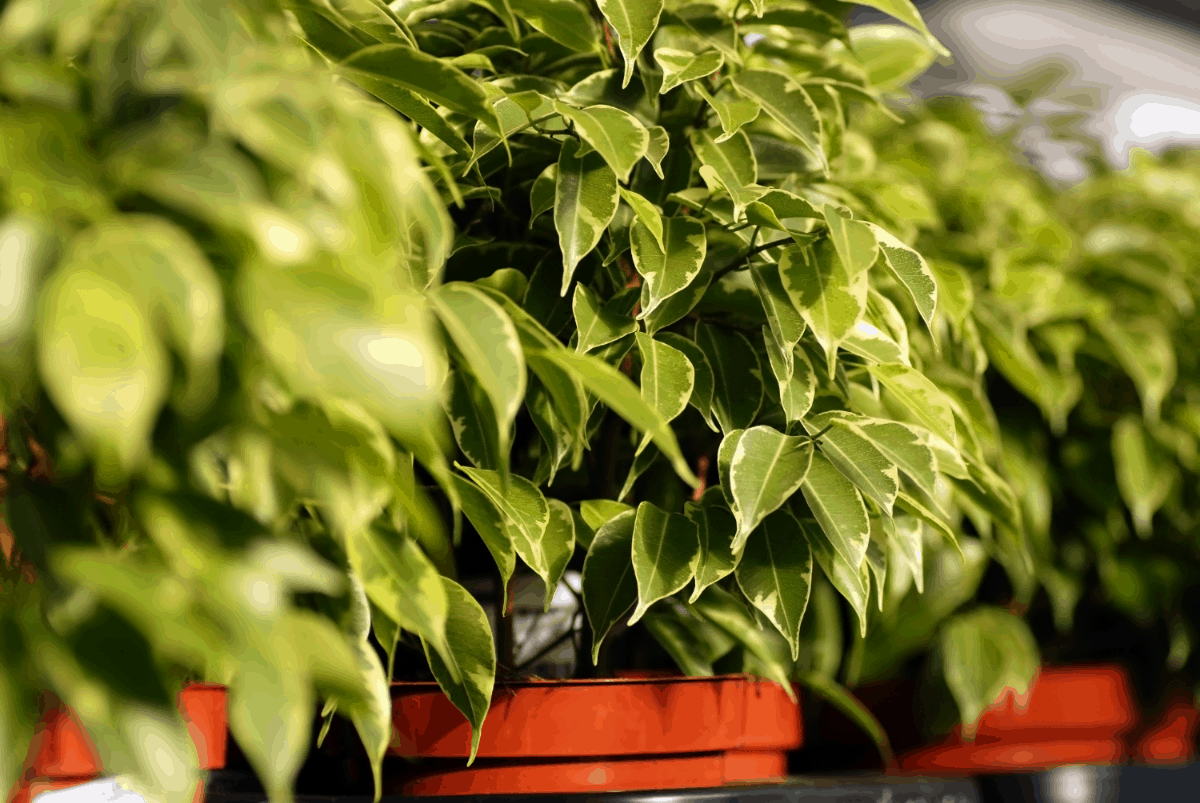
A Ficus, or Weeping Fig, will remove benzene, formaldehyde, and trichloroethylene from the air.
#7 Boston Fern
The Boston Fern likes a lot of humidity and indirect sunlight. Perfect for a little pop of color and nature in the bathroom or another high-humidity spot in your home. They are easy to care for but really do need to stay moist, so check their soil daily.
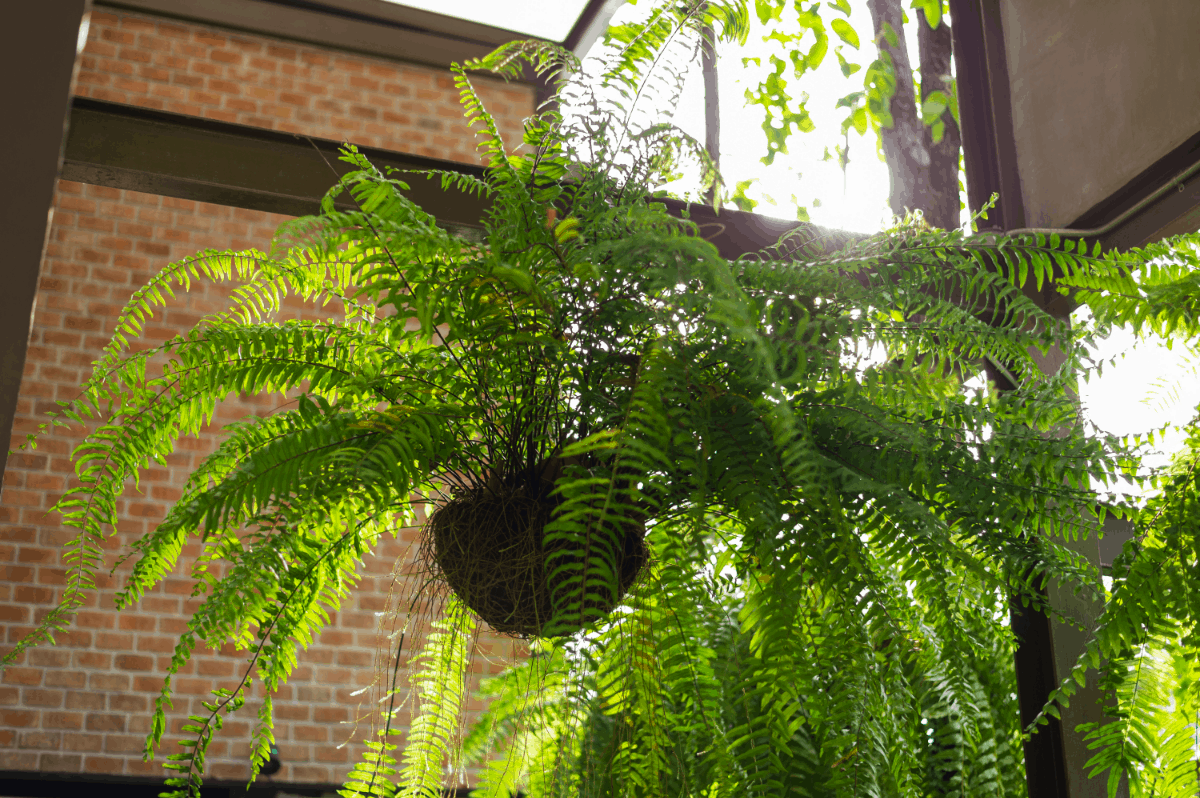
Boston Fern can purify the air by removing formaldehyde and xylene.
#8 Bamboo Palm
The Bamboo Palm gets pretty tall; up to 12 feet. If you’ve got a good spot for it, it does a great job at cleaning the air indoors, as well as adding an interesting and exciting look to your home or office space.
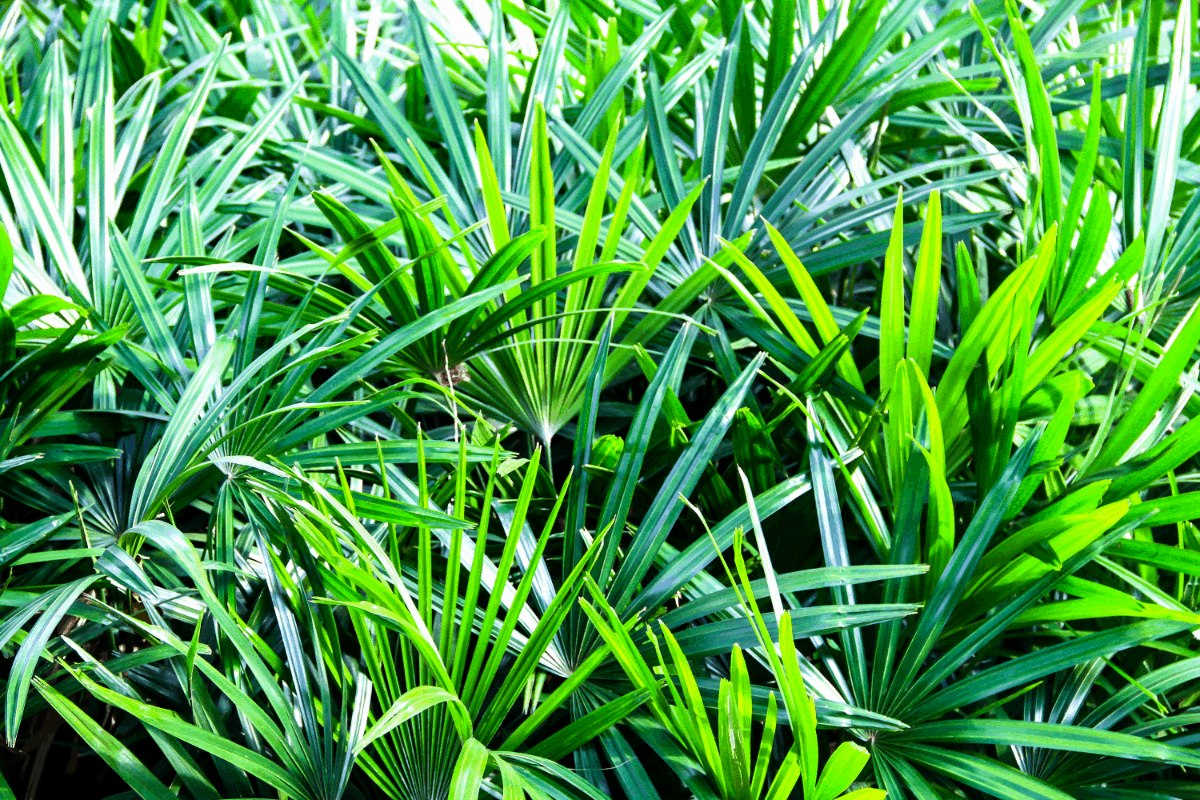
Bamboo Palm cleans the air of benzene, formaldehyde, and trichloroethylene.
#9 Aloe Vera
Not only does Aloe Vera do a pretty good job at cleaning your indoor air, it also has other great health benefits. Aloe’s leaves store a clear liquid full of vitamins and other compounds that have wound-healing abilities. Aloe Vera is also edible and can be very delicious. (Just make sure you do your research before doing so!)

Aloe Vera can remove formaldehyde from the air.
#10 English Ivy
English Ivy is a classic and common houseplant. It needs a small pole for climbing but it’s easy to keep under control. English Ivy loves moist soil and a good spray mist every few days. Indirect sunlight and even humidity make this plant ideal for most well lit indoor areas.
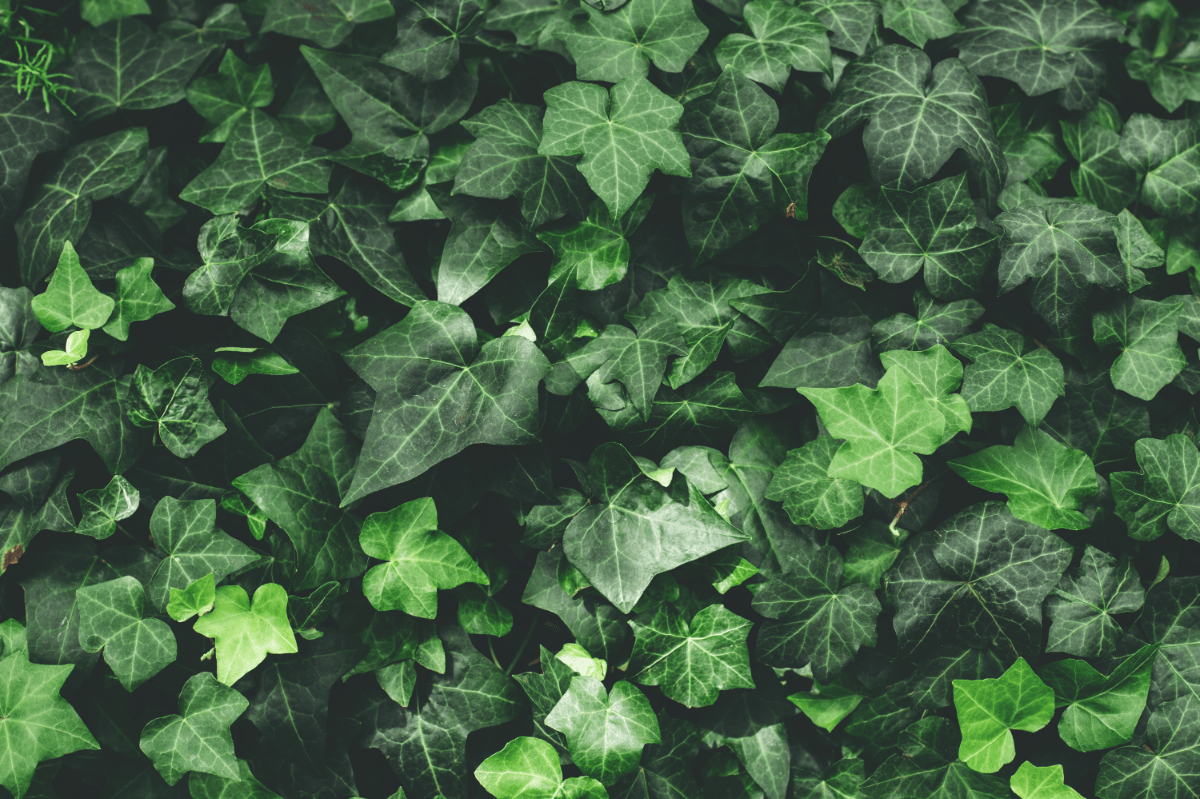
English Ivy works to purify the air of benzene, formaldehyde, and trichloroethylene.
More Uses and Benefits to Houseplants
Not only do these, and other, houseplants naturally and effectively clean indoor air, but they can also provide other benefits. Such as in the case of Aloe Vera’s wound-healing properties, houseplants can be used for other things. Just the very act of having living plants in your environment can make you healthier. Studies have shown that plants even have a psychological effect on us; being around plants, for example, can cause people to recover from illnesses faster. Keeping plants around also helps reduce stress.
More Tips to Improve Indoor Air Quality
Summary
I couldn’t imagine going back to having a house without houseplants. Having brought even just a little bit of nature inside my home has made life better by cleaning my air and making it, in general, a more cheerful and welcoming space. Stress levels drop and make everyone feel just a little closer to nature and having an Aloe Vera in the kitchen helps when I’m looking to soothe an accidental burn while working at the stovetop. Check into going this route with your indoor space. But don’t just take my word for it – NASA thinks it’s a good idea too!

Barbara is an environmental activist and sustainability advocate who loves living green and sustainable. She firmly believes in reducing her carbon footprint and has been making great strides towards achieving this goal. Barbara is a vegan and avid recycler and has been actively involved in community gardens and other green initiatives. She is passionate about spreading awareness about the importance of living in a sustainable and eco-friendly manner. Barbara is always looking for ways to make a difference in her community and beyond. She is a huge advocate for preserving nature and the planet for future generations.

